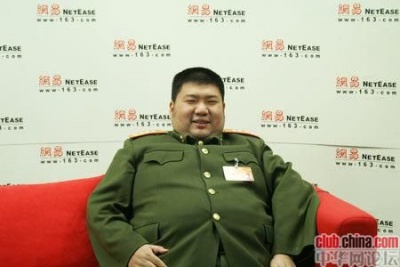“Professional grandchild”的版本间的差异
来自China Digital Space
| 第8行: | 第8行: | ||
[[File:mao3.jpg|400px|thumb|left|Example of Mao's poor handwriting. Penmanship means a great deal in China where leaders' calligraphy often adorns buildings, bridges and other public works.]] | [[File:mao3.jpg|400px|thumb|left|Example of Mao's poor handwriting. Penmanship means a great deal in China where leaders' calligraphy often adorns buildings, bridges and other public works.]] | ||
| − | + | . | |
| − | |||
For more examples of Mao Xinyu's handwriting, see [http://www.chinasmack.com/2011/pictures/mao-zedong-grandson-mao-xinyu-photos-handwriting-calligraphy.html here]. | For more examples of Mao Xinyu's handwriting, see [http://www.chinasmack.com/2011/pictures/mao-zedong-grandson-mao-xinyu-photos-handwriting-calligraphy.html here]. | ||
2011年1月6日 (四) 03:17的版本
专业孙子 (zhuān yè sūn zi): professional grandchild
The term “professional grandchild" usually refers to Mao Xinyu, Mao Zedong's only grandson. At 39, Mao Xinyu was promoted to become the youngest major general in the People's Liberation Army. Netizens coined the term “professional grandchild” for Mao Xinyu because they were cynical that Mao achieved his position through his own merits, and because the gist of his remarks in any public setting is that "Chairman Mao is my grandfather." The term is especially pointed because he word "grandchild" (孙子) in the Beijing dialect can also mean, "bastard", "shameless" or "piece of shit."
Mao Xinyu is famous for his round stature and for his efforts in promoting Mao Zedong thought. He has made several statements that have drawn the scorn of netizens such as “What America fears the most is not the modernization of China's army but the Mao-thought-ification of China's army” (美国的学者不怕我们军队的现代化,就怕我们的军队毛泽东思想化). Netizens have also poked fun at his childlike handwriting. For more on Mao Xinyu, see China Digital Times, here.
.
For more examples of Mao Xinyu's handwriting, see here.






